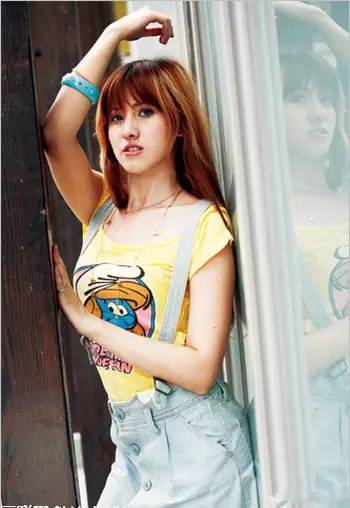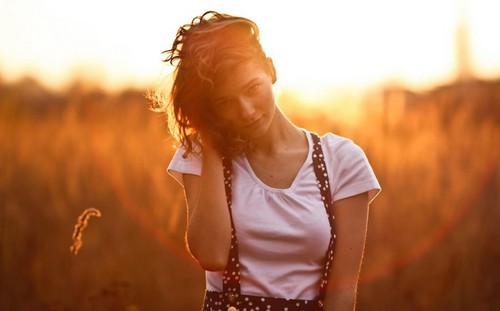Table of Contents
The Importance of Light for Photography
Light is to photography what oxygen is to life. From framing, framing, adjusting the camera to pressing the capture button, there is not a single step without the involvement of light. Like oxygen, it is the basic condition for all the activities of life.
A successful photograph must have wonderful light. A failed photographic work is mostly caused by the lack of light. Therefore, to learn photography well, you must learn light, so that it can become our good companion in any occasion.
Classification of Light
According to the different light sources, we can divide light into several types. Among them are the most familiar ones and the lesser known ones. As the saying goes, the building near the water comes first, and today, I will start with the natural light that we are most familiar with.
Natural light refers to the light that shines on the earth with the sun as the light source. It not only refers to the sunlight on sunny days, but also includes the light reflected by cloudy, rainy, snowy and foggy weather. There is also moonlight at night and the light seen indoors without artificial lighting. These are all within the natural light range.
Light is a tool. Whether you can use it with ease depends on how well-trained you are. But more important is imagination. Photographers must learn to observe light and its effects. You try to transform the effect as much as possible, no matter what the lighting conditions are. As long as the footsteps move, the light changes differently.
The natural scenery photos taken by American photography master Adams, those rocks, trees, bright moon, and white snow, can be called a masterpiece of magical light and shadow. In fact, he used light and shadow to write poetry.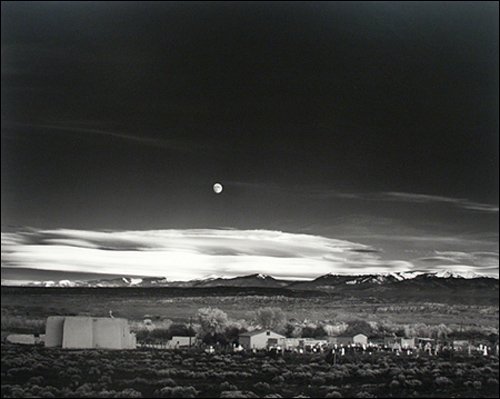
Light itself appears in many different forms, and photographers should be good at choosing the most suitable form to achieve a particular purpose.
Light Intensity
Natural light is the change of bright, dark, strong and weak with the change of season and time. The bright light of spring and summer gives a dazzling, bright and vibrant feeling.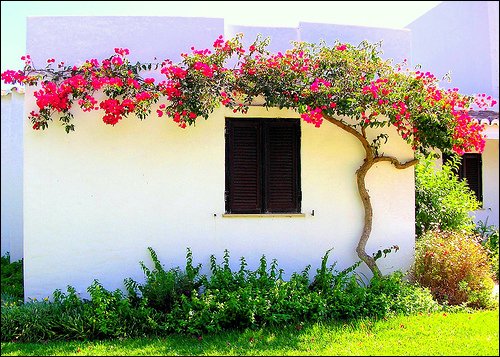
The dim light of autumn and winter is suitable to express melancholy, tranquility and subtle mood. Photographers can use this difference in light intensity to better highlight the characteristics of the subject to reflect the shooting intent.
Light Quality
Light quality has nothing to do with the intensity of light. The light can be direct light from a hot source, or reflected light from the surface of the object being illuminated. Direct light is natural light that is not blocked by clouds and fog. Diffuse light is sunlight that is obscured by clouds, soft light that bounces off walls, ceilings, or other surfaces.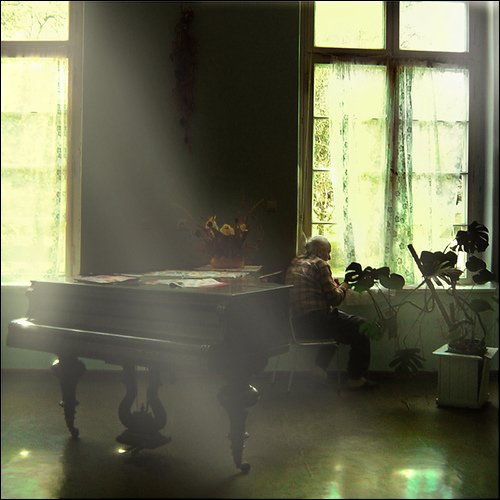
Direct light is strong and dazzling, with high contrast, creating clear and prominent shadows. The reflected light formed by reflection is softer and has less contrast. Can result in a blurry shade of gray or no shade at all. It can express the shape of the subject and reproduce its original appearance delicately and naturally.
Direction of Light
It refers to where the light comes from. The photographer should study the different poses and special effects of the scene he wants to photograph under different lighting conditions. When the photographer is facing the sun, the subject is exposed to the frontal light, which is flat and weak and lacks layers.
It can be quite noticeable when viewed in side light or in backlight. If you use the backlight to shoot the traffic flow after get off work, how attractive the picture is. These are all artistic effects that come from different light sources.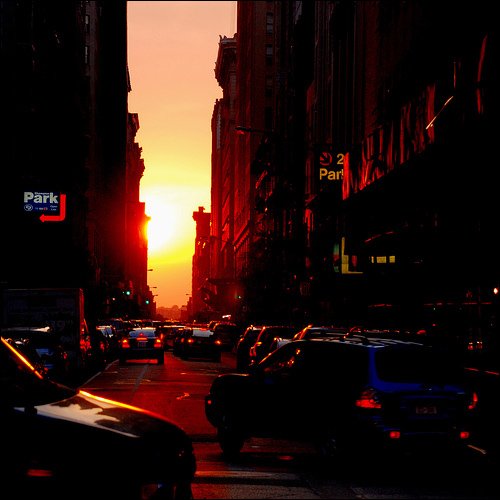
We can see from this how inseparable the relationship between light and photography is. Only skilled use can improve the artistry and appeal of photos.
Mastery of Natural Light
Shooting with natural light is the easiest way. Usually photographers mostly use aperture priority and leave the metering work to the camera. If the lighting is wrong, adjusting the exposure compensation can improve the picture. Directly use natural light as the main light source, and customarily add a reflector to reflect sunlight to complement the dark side of the Model’s face. In addition to reducing contrast, it can also have multiple catchlights in the model’s eyes. In this photo, photographer added a reflector to the front left of the Model to evenly fill the light on the dark surface.
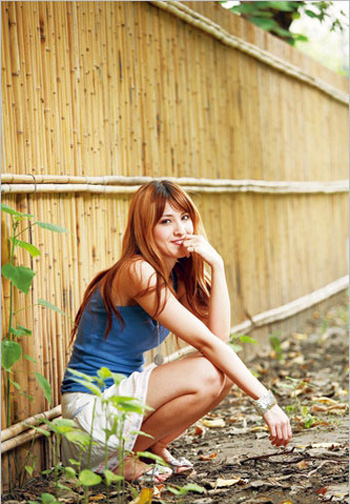
Shooting in natural light only with reflector fill light
Flash or External Light Fill Light
If the natural light is weak, the effect of filling light with the reflector is not good, or the contrast of the picture is too large, you can use the flash to fill in the light. When using the flash, it is recommended to connect the off-camera cable, and it is better to use the off-camera flash to fill in the light. The advantage is that it is more beautiful than the flash mounted directly on the camera, because the direction and range of the fill light can be adjusted to avoid the face light being too stiff and enhance the three-dimensional effect.
If the contrast is large, you can try to control the direction of the light. In the dark part of the Model, the light output of the manual flash can be 1/32~1/16, supplemented by some weak light sources. You can also hit the flash on the reflector to reflect the fill light to diffuse the fill light range.
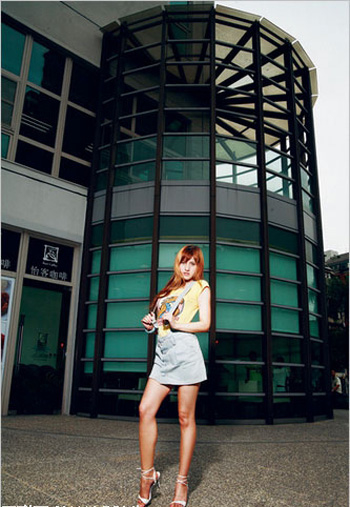
This is a photo thte photographer has shot with external lighting
Choose your Background Carefully
After selecting the shooting location, it is best to go to the scenic spot to investigate first. However, if time does not allow, the photographer should train the ability to observe the scene. He can quickly complete the idea of the feeling, scenic spot and picture to be photographed, arrange the style, color and accessories of the clothing, and complete the preliminary communication with the model.
1. You can also use Murals as backgrounds
Whether the Model is standing in front of the wall or leaning against the wall, you can present her in different poses and expressions. Make good use of the background, and you can easily take a unique photo.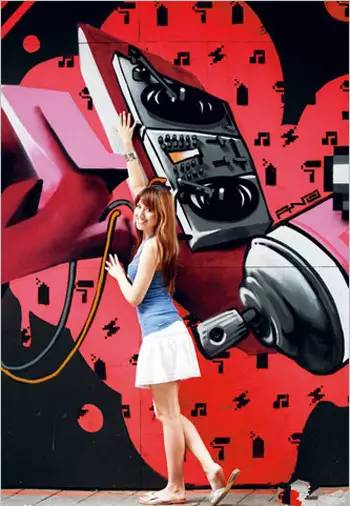
2. Borrowing cars on the roadside as props
If you park a famous car with bright colors, you can also ask Model to make a fuss about this car. Photographers themselves can make good use of different lens characteristics and take a variety of perspectives, and then ask the Model to interact with the car a little to shoot works with bright colors and sufficient contrast.
In fact, it’s not just the cars on the roadside. If you happen to encounter some fresh scenery, or eye-catching architectural decorations, they are all elements that are very good to borrow from the theme.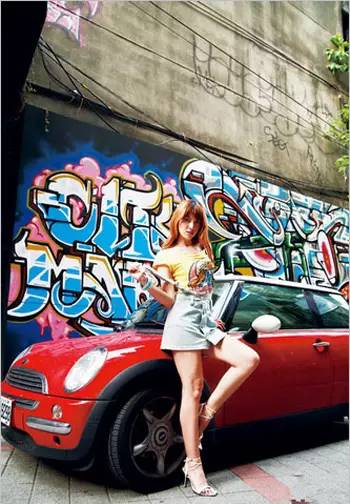
3. Downtown streets
Take pictures on the streets in the downtown area, because there will be more interference factors in the background, such as pedestrians, cars, and store signs. Therefore, you can use a medium and long focal length lens with a large aperture to create portrait works with compressed backgrounds and blurred bokeh.
In addition, the use of light is also a science. Although the light was smooth when shooting on the day, the average light source on the face was not enough, so it was necessary to use the reflector to evenly fill the light on the shadow of the face, and also use the eye light to add brilliance to the work.

No reflector for fill light
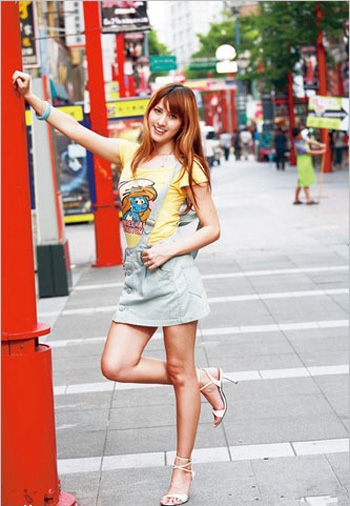
Full body composition with reflector for fill light.
4. Glass window reflection
For location shooting, glass window is a very useful auxiliary prop. By virtue of the reflection of glass, it can express the interest of composition fully . In the whole picture, the real and illusory portraits can be expressed through the photographer’s ideas. Of course, we can also just use it as a background when creating.
How to express the charm of this medium depends on everyone’s ideas and creativity when shooting. But be careful, when facing the glass that will produce reflections, try to find an appropriate angle to prevent your own shadow from entering the mirror.
In addition, if you want to use the flash, shooting straight from the front will also expose the point light source in the image. If you deliberately create it, it can also make a good work. If you accidentally let the lights pass through, the work will be greatly deducted.
